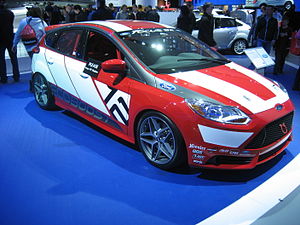On any given NASCAR race weekend, he’s bouncing from one car to
another in the garage area, listening to issues, hearing about bits and
pieces of problems, making corrections.
Messick is trackside services manager for Roush Yates Engines, and his
job gained another layer this year with the introduction of electronic
fuel injection to the Sprint Cup Series. It’s a brave new world for
NASCAR teams and a revolution of sorts of the sport, which had relied on
the dependable if bulky carburetor since two guys driving stock cars
first challenged each other to a duel.
EFI brings an entirely new vocabulary to the sport. Fuel injectors now
control the flow of gas to the cylinders that power the race cars, and
now teams deal with electronic control units and relay boxes and sensors
and laptop computers that are plugged into the cars to read all the
data the systems churn out.
It’s a complex structure, one very different from previous seasons, and,
in the early weeks of the schedule, few people have been surprised that
glitches have appeared. Tony Stewart and Mark Martin have been hit by
failing circuit breakers in the system, and Penske Racing has dealt with
fuel pickup problems that soured the start of the year for its two
drivers, Brad Keselowski and AJ Allmendinger.
Ford teams have not had dramatic problems, a status Messick is pleased to report.
“It’s gone really well,” he said. “We have a good team of EFI guys
coming to the race track. Doug Yates has done a very good job of
organizing it so we can keep our EFI system going and also our
Nationwide program. We’re very happy with how it’s gone.”
In the early weeks of the schedule, the new configuration has been
tested at a dizzying spectrum of tracks – from the restrictor-plate
climate of Daytona to the “short” big track at Phoenix to the very fast
1.5-mile course at Las Vegas to the high-banked short-track mayhem of
Bristol.
“There are changes, but we’re still looking at it like what we would be
doing if we still had a carburetor,” said Messick, who said it’s
important for engine personnel to approach EFI as just another menu
item, not a giant to overcome.
“All the tracks are different, but it’s all stuff that we’ve been
through,” he said. “We’ve done it this way forever. We try to keep a
clear mind and not get muddied up with EFI. EFI is so different, but
it’s just like anything else. If you take a big, complex problem and
break it down into little problems, you normally figure it out a lot
easier.”
Near-constant attention to the ins and outs of the situation -- after a
year of planning and testing for the EFI arrival -- limits the potential
for problems. This is why Messick sometimes talks EFI over a
cheeseburger.
“We feel like the whole thing is very organized,” he said. “We go to
Bristol, and this is what we used to do. It’s what we do now. The same
thing at Fontana. We feel we have a really good system and a good group
of guys who are on the road every week. We look at everything together.
We talk about it in the car, back and forth to the hotel, going to eat,
trying to make sure we’re all communicating.
“You have to be careful or you could easily get overwhelmed by the data.
You could look at stuff that might not help your car go faster. So
you’ve got to break it down into what you want to look at and what you
don’t, what helps the engine side and what helps the team side. You have
to keep your mind clear and not get spun out and overwhelmed by all the
stuff that is coming in and what’s going on.”
And, still, there could be rocks in the road.
“You always think about the what-ifs and what may go wrong,” Messick
said. “We’ve had a couple little hiccups, but so far we’ve been able to
work to get through them and not let them be major hiccups like our
competitors.”
By the second half of the season, Messick said, teams will have made
most of the adjustments to the new system and any significant
differences in competitive levels probably will have evened out.
“There definitely will be an increase in understanding the system,” he
said. “Everything will come along. The teams that are struggling with it
now, they’ll probably get a little better. Those of us who are happy
and feel good about how it’s going, there will still be some improvement
left.
“But the teams that are struggling will catch up closer to where the
upper teams are. That is no different than going to a new car design or
anything else. It’s the same way that kind of stuff always works.”





